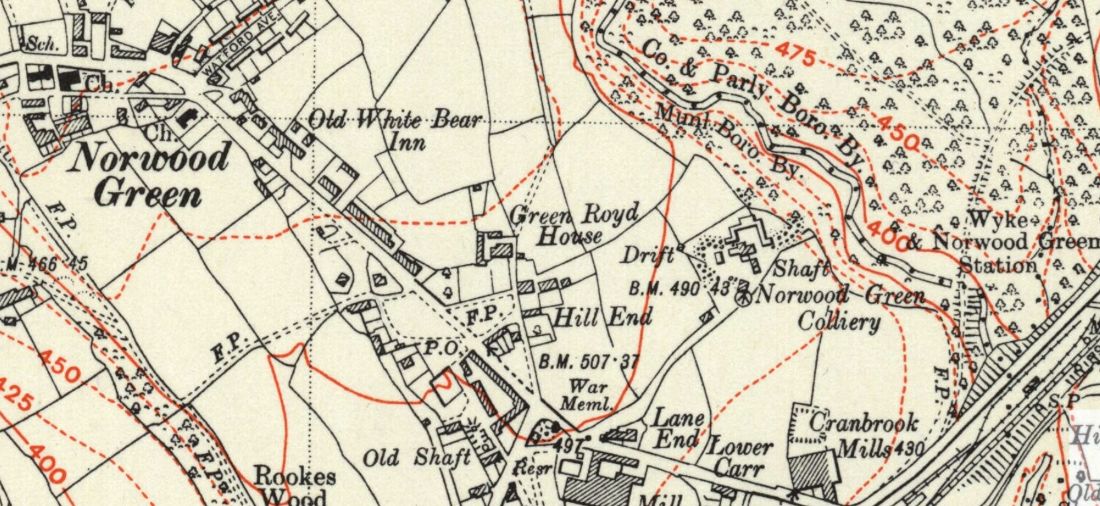This small colliery, near Wyke, was near the western edge of the Yorkshire coalfield. Unlike their neighbours to the east, Bradford’s collieries were well down in the lower coal measures and were separated from the Halifax coals by a thick layer of Elland Flags, so working deeper seams was not an option. By the time of nationalisation in 1947, therefore, most of the collieries in the Bradford area had closed.
The Norwood Green Coal Co. sank the first shaft on this site between 1873 and 1876. That company gave up the mine in 1880 and was replaced by Hird, Dawson & Hardy, of Low Moor iron works, from 1882 to 1887. They probably sank a second shaft on the site, which was then called Flathers Pit. Coal was taken from the pit to the iron works along a complex of company tramways. As the Low Moor Iron Co. the company continued to run Flathers Pit from 1888 to 1895, when it was closed. It worked the Black Bed at a depth of 69 metres, and the Better Bed at 105½ metres.
The Better Bed coal was 0.9 metre thick in the west, decreasing to the east. It is a dense, bright coal with an ash content of 0.75 per cent, very little sulphur, phosphorus or other impurities and was used for iron smelting.
The Black Bed was mainly worked around Bradford, and varied in thickness between 0.55 to 0.74 metres. It is soft, friable and dull in appearance and has an ash content of 1.5 per cent. Its chief use was for raising steam, but it was also used for gas making and as a house coal.
The mine was abandoned until 1930, when Norwood Green Collieries Ltd reopened the shafts and sank a steeply inclined drift. The Black Bed was worked in the first four years, and work in the Better Bed began in 1934. From 1935 to 1945 the average size of the workforce was 142 underground, with 33 on the surface.
With the exception of Sir Percival R. Reynolds, who lived in London, the other board members were local men. Two of them, A.E. Grace (1932-34) and H. Buncall (1935-40) worked as manager. The latter was replaced by C.A. Grace who, like A.E. Grace, lived at Moorside Road, Low Moor. He continued through the first year of nationalisation, but was replaced by H. Buncall (1948-51) until he returned from 1952 until 1958.
Norwood Green was big enough to be included in the nationalisation process on January 1st 1947, but it is unlikely that the NCB spent much on modernising it. The workforce remained broadly the same, however, with an annual average of 163 working underground, with 33 on the surface between 1935 and 1945. The Better Bed was probably exhausted when given up in 1958, with work continuing in the Black Bed until the NCB closed the mine in April 1959.
Further reading:
- NMRS Records, Gazetteer of British Collieries
- 1933 & 1947 – Colliery Year Book and Coal Trades Directory (Louis Cassier Co. Ltd)

OS Map, Yorkshire CCXXXI.NE 1949
Reproduced by permission of the National Library of Scotland

